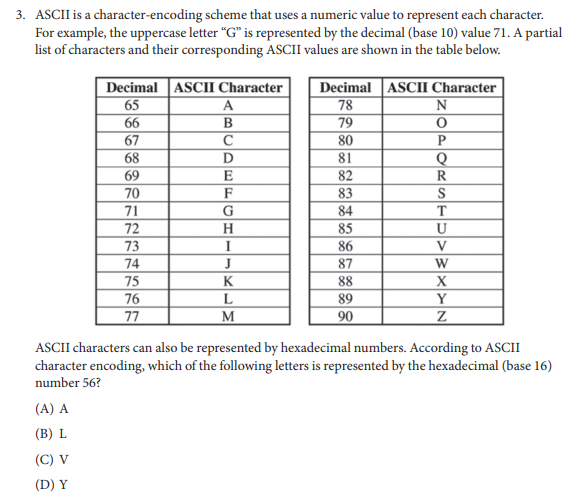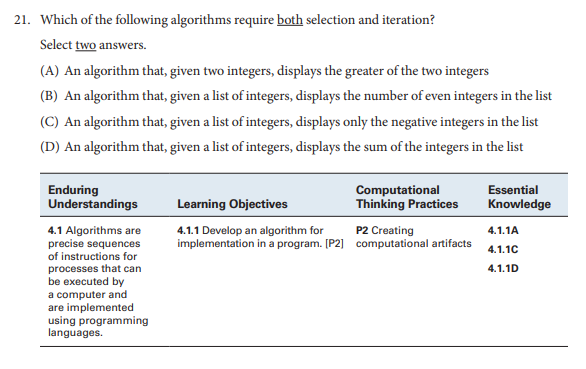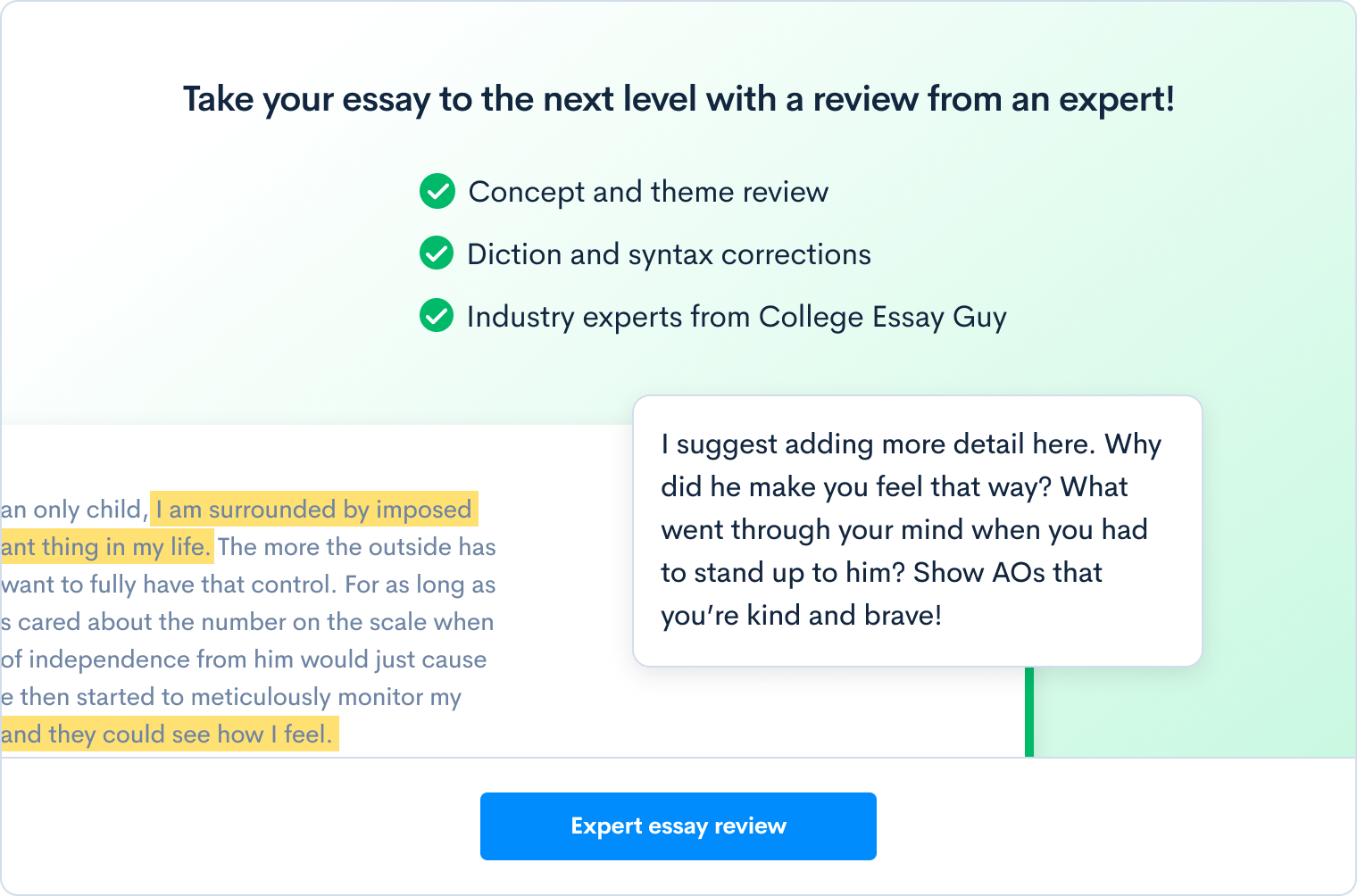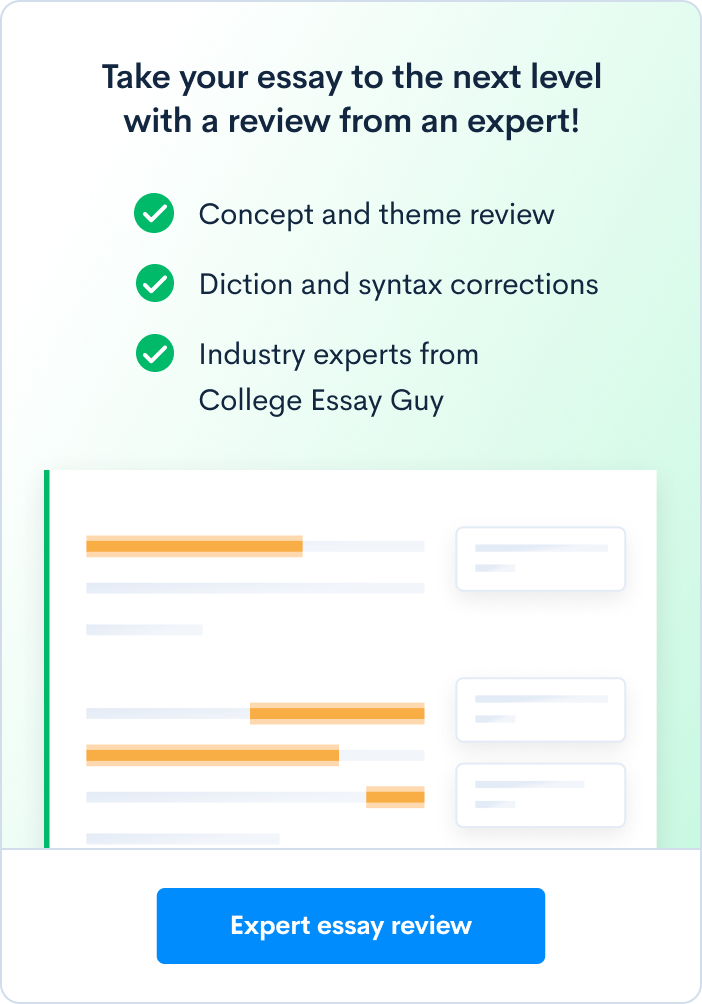The Ultimate Guide to the New AP Computer Science Principles Exam & Performance Tasks
The AP Computer Science Principles course is a newer AP class that was introduced only a few years ago in fall 2016. This course is one of a handful of AP courses that builds on the students’ own backgrounds and strengths, and stresses the importance of collaboration. Many who are used to a more rigidly structured AP course will be surprised by the innovative, flexible curriculum of this class, which uses the experiences, interests, and strengths of students to shape its path. For more about how your work will be assessed in the AP Computer Science Principles exam, read on for a breakdown of the assessments and CollegeVine’s advice for how you can best prepare. Curious if this is the right course for you? Check out CollegeVine’s Introduction to the New AP Computer Science Principles Course. The AP Computer Science Principles exam is one of the final tests held by the College Board, the organization that administers the AP. This exam will take place on Friday, May 15, at 8 am. For a complete listing of all the AP exam times (revised due to Coronavirus), check out our post 2020 AP Exam Schedule: Everything You Need to Know. The AP Computer Science Principles course develops computational thinking skills in the context of creative problem solving. The primary goal of the course is to “introduce students to the foundational concepts of computer science and challenge them to explore how computing and technology can impact the world.” The course seeks to broaden participation in computer science by attracting a diverse student body. In this course, you will learn ways to analyze and study data, work with large data sets, and draw conclusions from trends. Though the skill set you develop in this class is prescribed by the course’s core curriculum, the exact ways in which you apply your knowledge will be up to you. The College Board encourages teachers to foster student creativity in problem solving and to allow students to select the specific, real-world applications for their work. Self-studying for this exam is logistically very difficult, though not entirely impossible. Due to the exam format, which relies on prolonged in-class, collaborative work to produce 40% of its score, you will need a teacher to facilitate the submission of your work. Your teacher will need to create an AP CSP class in the AP Digital Portfolio so that your work can be submitted for evaluation. If the class is not offered at your school and the AP coordinator is not willing to facilitate the work for you, you may enroll in an online course, or try to enroll in the class at a nearby high school. The AP Computer Science Principles course focuses on two particular areas: computational thinking practices and big ideas. Through the development of the skills built and an understanding of concepts taught, students will not only prepare themselves to ace the AP Computer Science Principles exam, but also for future success in college computer classes and STEM careers. There are six computational thinking practices that AP Computer Science Principles participants must master. They are: Big ideas are the primary concepts explored in the AP Computer Science Principles course. Within each big idea are “essential questions,” the purpose of which are to encourage deeper thoughts about a specific concept and build a deeper understanding of it. Below are the seven big ideas of the AP Computer Science Principles course, along with their underlying essential questions and the percentage of the multiple-choice section of the AP Computer Science exam they make up. Creativity: Creatively use the tools and techniques of computing to create relevant, interesting artifacts that are enhanced by computing. Abstraction: Use abstraction to model the world and communicate with people and machines. Data and Information: Use computers and computation to get a clearer understanding of the ways data is transformed into information and knowledge. Algorithms: Develop and implement original algorithms, use algorithms in language, and analyze algorithms analytically and empirically. Programming: Learn the specifics of programming languages, create programs, and translate human intention into computational artifacts. The Internet: Understand how the internet operates, the characteristics of it and the systems it’s built on, and related concerns such as cyber security. Global Impact: Develop familiarity with how computing enables innovation, and understand the pros and cons the use of computing has in a variety of contexts. The evaluation format for AP Computer Science Principles reflects its commitment to individual student interests and strengths. There are two components: performance tasks and a traditional end-of-course exam. Performance Tasks | 40% of AP Computer Science Principles Score The first component of the AP Computer Science Principles evaluation is a through-course assessment in which students use classroom time to complete two prolonged performance tasks. This portion of the evaluation is innovative in that it signals the College Board’s acknowledgement that such performance tasks “assess student achievement in more robust ways than are available on a timed exam” and there are learning objectives that are “more effectively measured in an authentic, real-world performance task.” This is the first AP course outside of the studio arts and research/seminar programs in which through-course assessments are included in the evaluation and final AP score. Task One: The first of the performance tasks asks you to explore the impact of computer innovations during a minimum of eight hours of classroom time, and accounts for 16% of your total exam score. Task Two: The second performance task requires students to create a computational artifact through programming during a minimum of 12 hours of classroom time, accounting for 24% of your total score. You are required to submit a video of your program running, a written description of your program and an account of your development process, and the program code. End-of-Course Exam 2 hours | ~74 questions | 60% of score This portion of the exam is administered like a traditional AP exam and lasts two hours, accounting for 60% of your total score. It is a multiple-choice test consisting of about 74 questions, some of which have single-select answers (only one correct answer) and others which have multi-select answers (more than one correct answer). Below is an example of a single-select multiple-choice question: The answer is: C. Source: College Board. Below is an example of a multi-select multiple-choice question: The answers are: B, C. Source: College Board. AP Computer Science Principles Exam Score Distribution, Average Score, and Passing Rate In 2019, just over 96,000 students took the AP Computer Science Principles exam. Scores from the 2019 exam reveal a high passing rate (score of 3 or higher), but a difficult rate of mastery. While 71.9% of students taking the assessments scored a 3 or higher, only 13.8% received the highest score of a 5, while 37.1% received a 3. Keep in mind that credit and advanced standing based on AP scores varies widely from school to school. See the College Board’s regulations regarding which APs qualify for course credits or advanced placement at specific colleges for more info. A full course description that can help to guide your studying and understanding of the knowledge required for the test is also available on the College Board site. It’s a good idea to start your studying by taking a practice test to get an idea of strong and weak areas for you in the curriculum. Because the AP Computer Science Principles course is a newer offering, practice and assessment materials are limited. You can start to assess your skills by using some of the practice questions available in the course description. You can also assess your skills by reviewing a sample course syllabus or the course outline given in the course description. If you do choose to buy a commercial study guide, you can also find practice tests in many of those books, but be sure to pick one that’s well-rated. Once you have a rough idea of your existing skills and knowledge, make a list of content areas for review. It can be helpful to meet with your teacher or a friend at this point to discuss each big idea from the course as a way of ensuring that your self-assessment is accurate. An accurate formative assessment will allow you to get a better idea of where to focus your studying efforts. In order to understand the material in the AP Computer Science Principles course, you’ll need to understand the structure of the course outline, which is available in the course description. The outline organizes key concepts into seven “big ideas” that you will need to master. You should know each of the “enduring understandings” (falling under each big idea) and have examples of essential knowledge to support them. To get a better idea of the curriculum frameworks, review the College Board’s video series of Overview Modules for AP Computer Science Principles Teachers. As outlined above, the big ideas of the AP Computer Science Principles course are: Also noted above are the six computational thinking practices. These are the practical skills used by computer scientists on a daily basis and include: Due to its recent introduction, few outside study sources exist for the AP Computer Science Principles course. However, there is a free online course available at edX that will be useful for reviewing course material. There is also a list of recommended textbooks available on the AP’s Computer Science Principles course audit page. Finally, you should familiarize yourself with the student reference sheets available in the course description starting on page 114. Once you have your theory down, test it out by practicing multiple-choice questions. You can find these in the course description, or, if your teacher has registered with the AP Computer Science Principles AP Course Audit, they will be able to provide you with multiple-choice questions from the secure practice exam. You’ll also find a practice test, including multiple-choice questions, in the The AP Computer Science Principles Crash Course: Get a Higher Score in Less Time. The multiple-choice exam questions assess both the application of the computational thinking practices and your understanding of the big ideas. They may be accompanied by non-textual material such as diagrams, charts, or other graphical illustrations. This portion of the exam is heavy on programming, so make sure you understand the basics of how and when to apply specific programming skills. As you go through these questions, try to keep track of which areas are still tripping you up, and go back over this theory again. Focus on understanding what each question is asking and keep a running list of any concepts that are still unfamiliar. There are two performance tasks required for the AP Computer Science Principles course. Before undertaking either of them, you will need to master the content knowledge and skills necessary for success, complete practice performance tasks with feedback from your teacher, and review the scoring rubrics for your task. You can also review sample responses with examples of high-, medium-, and low-scoring performance tasks, which will help you understand the level of detail expected in your responses. Finally, make sure that you understand when and how to cite a source. You will receive no points for tasks in which appropriate citations are not used. The College Board does not dictate a specific citation format, so you may choose from MLA, APA, or IEEE styles, as long as you remain consistent throughout your work. The first performance task is the “Explore – Impact of Computing Innovations” performance task, which takes place over the course of eight classroom hours and accounts for 16% of your final AP score. You can find complete instructions for this task beginning on page 108 of the course description. For this exercise, you will be expected to conduct investigations on a computing innovation that has the potential to have significant beneficial and harmful effects on society, economy, or culture. You should choose an innovation that consumes, transforms, or produces data and that raises at least one concern in terms of its security, privacy, or storage. You will need to research the innovation, evaluating sources along the way for their relevance, credibility, and accessibility. You should also take care to avoid plagiarism by appropriately citing all sources used. Your investigation should not simply collect facts; instead, it should delve deeply into the computing innovation by asking questions, proposing solutions, and drawing thoughtful conclusions. This deep reflection will lead to your creation of a computational artifact that illustrates, represents, or explains the computing innovation’s intended purpose, function, or effects. You should strive for a creative and engaging artifact that shows your ability to think outside traditional avenues for communicating ideas. This could be an animated video, an infographic, a song, or anything else that highlights both the task and your creativity. You will submit your final Explore performance task as two parts: the computational artifact and the written response. See page 109 in the course description for exact submission requirements. The second performance task is the “Create – Applications from Ideas” performance task, which takes place over the course of 12 classroom hours and accounts for 24% of your final AP score. You can find complete instructions for this task beginning on page 111 of the course description. This task challenges you to create a program of your choice that solves a problem or expresses a personal interest. You are strongly encouraged to collaborate with another student in your class during the development of your program, but your program development must also involve a significant amount of independent work in the planning and designing parts of the process. Your completed program must demonstrate your programming skills. It should use several effectively integrated mathematical and logical concepts, implement an algorithm that integrates other algorithms and mathematical or logical concepts, and develop and use abstractions to manage its complexity. You will compose a written response describing your program, its development process, and its code. Your final submission will include a video of the program running, a copy of your code, and your written response. Full submission requirements are available on page 112 of the course description. If you have access to another practice test through your teacher, take it to evaluate your progress on multiple-choice questions. Review your performance tasks and make sure that you have successfully completed at least one of each with minimal guidance from your teacher. Remember, on the final performance tasks, you may not submit work that has been at all revised or corrected by your teacher, and you may not seek any assistance or feedback on answers to prompts. If you’re taking the AP course associated with this exam, your teacher will walk you through how to register. If you’re self-studying, check out our blog post How to Self-Register for AP Exams. For information about what to bring to the exam, see our post What Should I Bring to My AP Exam (And What Should I Definitely Leave at Home)? For more about information about APs, check out these other CollegeVine posts: Curious about your odds of acceptance to your dream school? Our data-driven chancing engine will let you know just that, based on your GPA, test scores, extracurriculars, and other factors. We’ll also show you how you stack up against other applicants, and how to improve your chances. Sign up for your free CollegeVine account to start using our chancing engine today!When is the AP Computer Science Principles Exam?
About the AP Computer Science Principles Course
AP Computer Science Principles Course Structure
Computational Thinking Practices
Computational Thinking Practice
Description
Connecting Computing
The effects developments in computing have and the connection between people and computers
Creating Computational Artifacts
The creative aspect of computing and using computing techniques to inventively solve problems
Abstracting
Use abstraction to make models and simulations and use them to make predictions
Analyze Problems and Artifacts
Design and produce computational solutions, models, and artifacts, and analyze their computational work and the work of others
Communicating
Describe computation, as well as the impact of technology and computation. Explain your computational work and choices, along with that of others
Collaborating
Work with students with diverse backgrounds, ideas, skills, and perspectives to solve complex problems and answer open-ended questions
Big Ideas
Big Idea
Approximate Percentage of Multiple-Choice Questions
Creativity
N/A
Abstraction
19%
Data and Information
18%
Algorithms
20%
Programming
20%
The Internet
13%
Global Impact
10%
About the AP Computer Science Principles Exam


Exam
5
4
3
2
1
AP Computer Science Principles
13.8%
21%
37.1%
18.8%
9.3%
Tips for Preparing for the AP Computer Science Principles Exam & Performance Tasks
Step 1: Start with Assessing Your Skills
Step 2: Study the Theory
Step 3: Practice Multiple-Choice Questions
Step 4: Refine Your Performance Tasks
Step 5: Repeat Your Practice
Step 6: Exam Day Specifics





